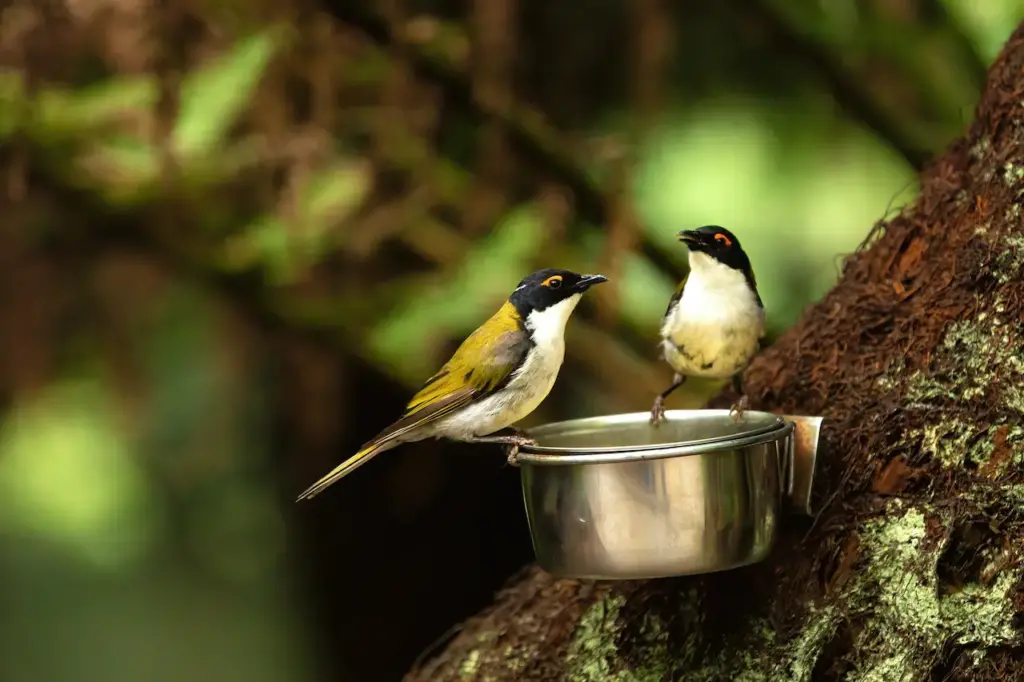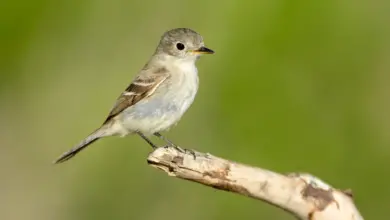Wetar Figbirds
Wetar Figbirds (Sphecotheres hypoleucus)
The Wetar Figbirds (Sphecotheres hypoleucus) is an Indonesian figbird species that is classified as “near threatened” in its natural habitat due to extensive deforestation within its limited range. However, this figbird remains moderately common in suitable habitats. Its common name was derived from its natural range – the small island of Wetar.
Some authorities consider it a subspecies of the Timor Figbird (Sphecotheres viridis); however, most list it as a separate species.

Alternate (Global) Names
Chinese: ????? … Czech: žluva wetarská … Danish: Wetarfigenfugl … Dutch: Wetarvijgvogel, Wetar-vijgvogel … Finnish: wetarinviikunansyöjä … French: Sphécothère de Wetar … German: Wetarfeigenpirol … Indonesian: Burungara Wetar … Italian: Mangiafico di Wetar … Japanese: meganekouraiuguisu, wetarumeganekouraiuguis, ???????????????, ??????????? … Norwegian: Wetarfikenfugl … Polish: figojad bialobrzuchy, figojad bia?obrzuchy … Slovak: vlha monzúnová … Spanish: Oropéndola de la Wetar … Swedish: Wetargröngylling
Distribution
The Wetar Figbirds are only found on the Indonesian island of Wetar – the largest island of the Barat Daya Islands located east of the Lesser Sunda Islands (part of Maluku Islands.
They occur naturally in lowland monsoon forests and lightly wooded scrubland.
While Figbirds generally remain in their habitats, they will travel to areas that provide food sources.
Description
A medium-sized bird, the Figbird is usually observed in its range and protected areas. They are highly sexually dimorphic (males and females can easily be visually identified).
Males have bare, bright red facial skin around the eye, which contrasts against a black crown. The back is olive-green and the plumage below (throat, chest and belly) is white.
Females are more plain. Their plumages are mostly brown and white, with bold dark streaks. The facial skin is grey, without any other distinctive head markings. The tops of their bodies (dorsal areas) are brown-green above and below (the ventral areas) are off-white with brown streaking.
Adults of either gender have a greyish-black bill with a red base and pinkish legs.
Juveniles resemble females, but the streaking below is generally not as strong.
Similar Species:
The Wetar Figbird resembles the widespread Australasian Figbird, except for the smaller size and the male”s plumage below is entirely white.
Nesting
Figbirds typically breed in small, loose colonies, constructing their nests nearby of each other in nearby trees.
The Figbird fashions a most unusual nest. The flimsy cup nest is shaped like a hammock and suspended from a horizontal fork in a tree near the end of a branch, between 6 and 20 meters from the ground. The nest is composed of vines and twigs.
The Figbird will breed from September to February, and it will lay 2-3 pale-green eggs with brown blotches, which are incubated for about 18 days to hatching. Both parents share the incubation duties and care for the young. The Figbird is an aggressive species, able to drive away nearly all predators, thereby affording protection to its nest sites. The young leave the nest when they are about 16 – 17 days old.
Diet
Figbirds feed in flocks of around 20 birds.
Figs are a particularly popular food item (as suggested by their common name), although they will feed on most soft fruits and native berries in canopy trees. They consume Insects also.
They also have been known to eat nectar and seeds.
Calls / Vocalizations
An outgoing group, their call resembles a loud, descending ‘chiew.’ Australasian Figbirds have in their repertoire of sounds many different short calls and are also able to imitate the calls of other birds. They will mimic parrots and some species of orioles.
Their vocalizations are mainly a series of simple whistles and noisy chattering.


